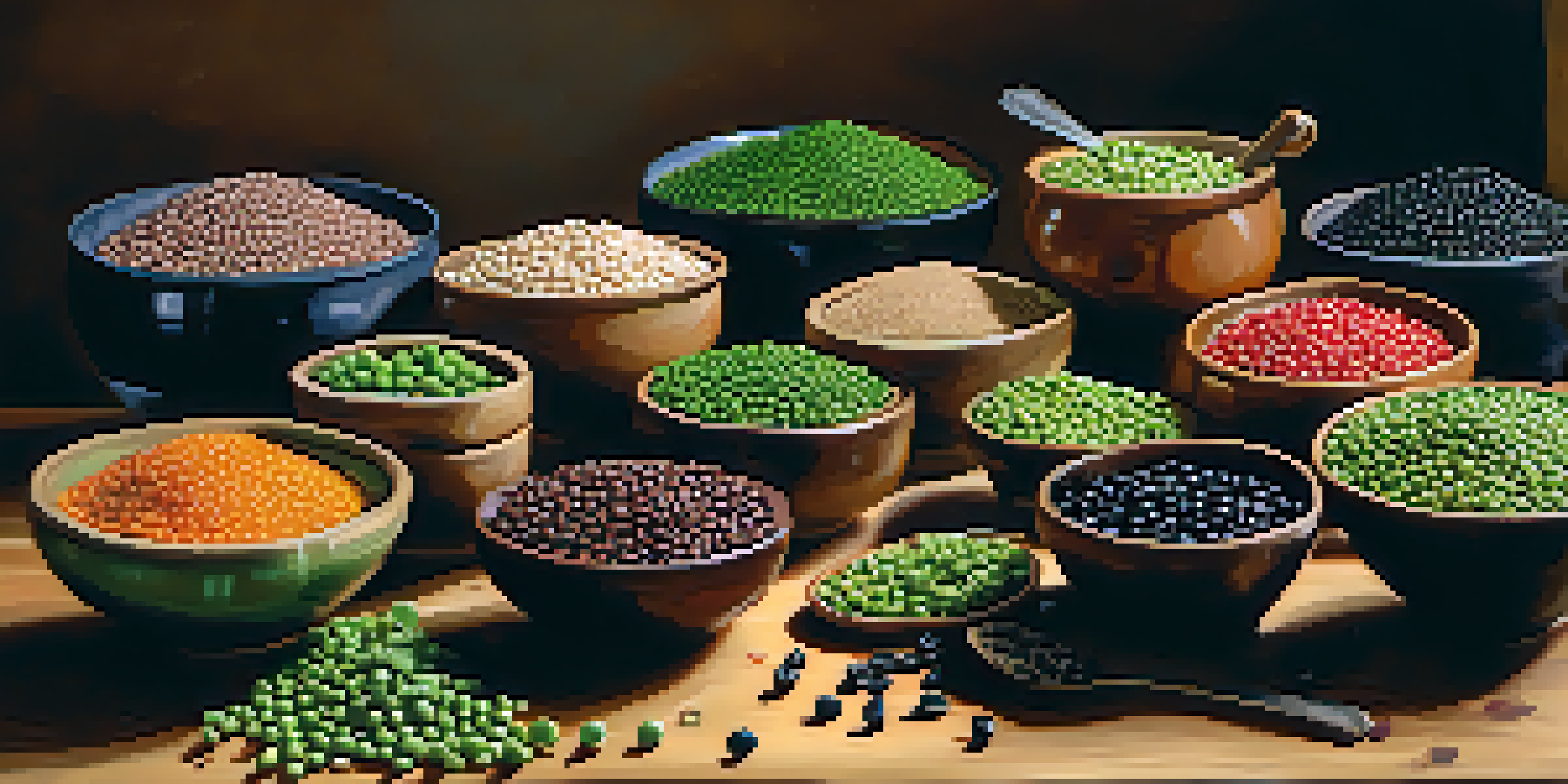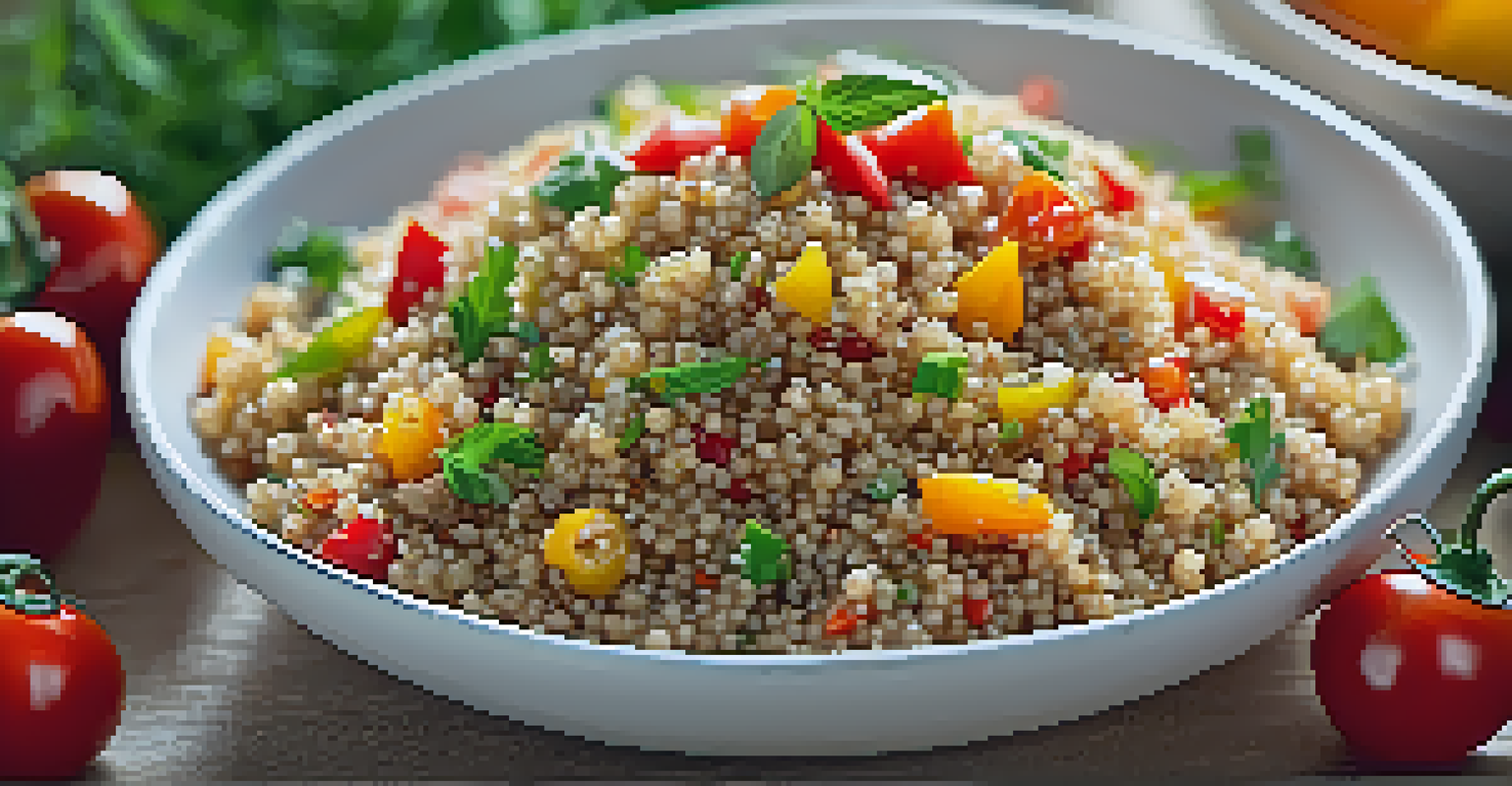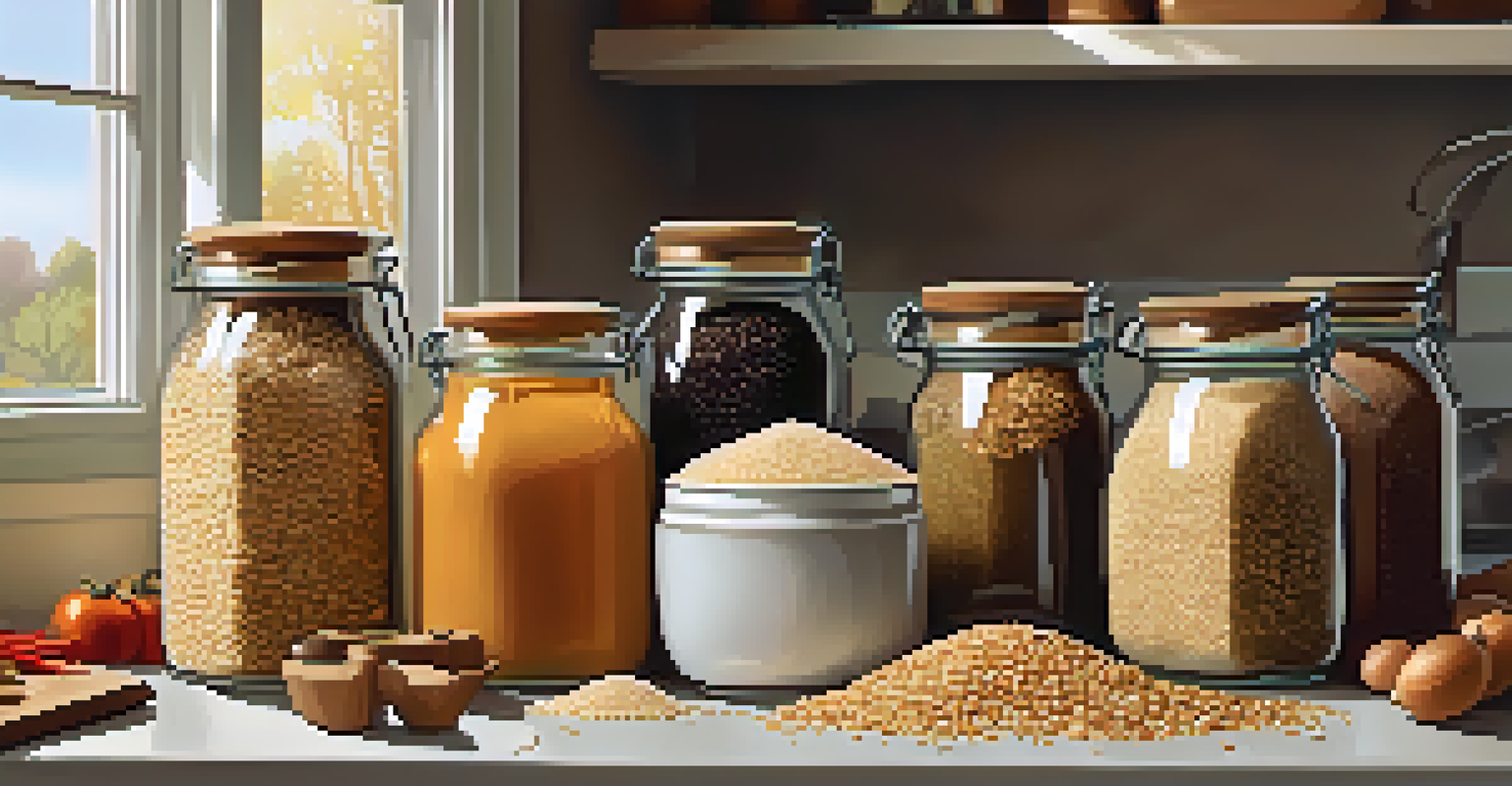Vegan Protein Sources That Help Control Blood Sugar Levels

Understanding Blood Sugar and Its Impact
Blood sugar, or glucose, is the primary sugar found in your blood and serves as a crucial energy source for your body. When we eat, our bodies convert food into glucose, which can lead to spikes in blood sugar levels. Managing these levels is essential, especially for those at risk of diabetes or with existing blood sugar issues.
Let food be thy medicine and medicine be thy food.
High blood sugar can lead to serious health problems, including fatigue, organ damage, and increased thirst and hunger. This is where diet plays a significant role, as certain foods can help maintain balanced glucose levels. Incorporating specific vegan protein sources into your meals can be a game changer.
In addition to providing essential nutrients, some vegan proteins have low glycemic indexes, meaning they release glucose more gradually into the bloodstream. This can help prevent sharp spikes and crashes, keeping energy levels stable throughout the day.
Legumes: Beans, Lentils, and Peas
Legumes, such as beans, lentils, and peas, are fantastic vegan protein sources that are also packed with fiber. Fiber slows down the digestion of carbohydrates, which helps to stabilize blood sugar levels. For instance, black beans are not only high in protein but also provide a hearty dose of fiber, making them a smart addition to meals.

Lentils are another excellent choice, as they cook quickly and can be added to soups, salads, or even made into patties. They have a low glycemic index, which means they won’t cause your blood sugar to spike. Incorporating legumes into your diet can easily enhance your meals while keeping your sugar levels in check.
Blood Sugar and Diet Connection
Managing blood sugar levels is crucial, especially for those at risk of diabetes, and diet plays a significant role in this.
Moreover, peas are versatile and can be blended into smoothies or made into a creamy soup. By using legumes as a base for meals, you can create nutritious dishes that are both satisfying and beneficial for blood sugar control.
Quinoa: A Complete Protein Powerhouse
Quinoa is often hailed as a superfood, and for good reason. This ancient grain is not only a complete protein, meaning it contains all nine essential amino acids, but it also has a low glycemic index. This makes it an ideal choice for those looking to manage their blood sugar levels effectively.
The greatest wealth is health.
When cooked, quinoa has a light, fluffy texture and a slightly nutty flavor, making it a wonderful base for salads, bowls, or as a side dish. By replacing higher glycemic options like white rice with quinoa, you can enjoy meals that are both delicious and healthier for your blood sugar.
Additionally, quinoa is rich in fiber, antioxidants, and essential minerals, further supporting overall health. Its versatility allows it to be incorporated into various dishes, helping you maintain a balanced diet while keeping your blood sugar stable.
Nuts and Seeds: Tiny But Mighty
Nuts and seeds are often overlooked when it comes to protein sources, but they're packed with essential nutrients that can aid in blood sugar management. Almonds, walnuts, chia seeds, and flaxseeds are particularly noteworthy. These foods are high in healthy fats, fiber, and protein, which can help slow the absorption of sugar.
For example, a handful of almonds can make a great snack that not only satisfies hunger but also stabilizes blood sugar levels. Chia seeds can be added to smoothies or oatmeal, providing a protein boost along with their beneficial omega-3 fatty acids.
Benefits of Plant-Based Proteins
Incorporating vegan protein sources like legumes, quinoa, and tofu can help stabilize blood sugar levels and provide essential nutrients.
The best part is that nuts and seeds can be easily incorporated into your diet in various ways, whether as toppings, snacks, or even in baking. Their rich nutrient profile supports both blood sugar control and overall health.
Tofu and Tempeh: Plant-Based Protein Staples
Tofu and tempeh are fantastic sources of plant-based protein that also offer benefits for blood sugar control. Tofu, made from soybeans, is versatile and can be used in a variety of dishes, from stir-fries to smoothies. It has a low glycemic index and can help keep you feeling full, reducing the likelihood of unhealthy snacking.
Tempeh, on the other hand, is fermented soybeans with a firmer texture and a nuttier flavor. It is rich in protein and probiotics, which can further support digestive health. Incorporating these soy products into your meals can help create balanced and satisfying dishes.
Both tofu and tempeh can absorb flavors from marinades and spices, making them a perfect canvas for your culinary creativity. By adding these protein-rich foods to your diet, you can enjoy tasty meals that also contribute to blood sugar stability.
Whole Grains: More Than Just Carbs
Whole grains, such as brown rice, barley, and farro, are not only excellent sources of carbohydrates but also provide fiber and protein. Unlike refined grains, whole grains have a lower glycemic index, which means they release sugar more slowly into the bloodstream. This gradual release can help prevent spikes in blood sugar levels.
Incorporating whole grains into your meals can be as simple as swapping white rice for brown rice or adding barley to soups and stews. These grains are also rich in vitamins and minerals, making them a nutritious choice for any meal.
Vegetables Enhance Nutritional Value
Adding a variety of non-starchy vegetables to meals not only boosts nutrition but also aids in blood sugar management.
By embracing whole grains, you can enjoy satisfying meals that keep your energy levels stable. Plus, the variety of textures and flavors available in whole grains can add depth and interest to your dishes.
The Role of Vegetables in Blood Sugar Control
While vegetables are often thought of as side dishes, they play a crucial role in managing blood sugar levels. Non-starchy vegetables like spinach, broccoli, and cauliflower are low in carbohydrates and calories, making them ideal choices for a balanced diet. They also provide essential vitamins, minerals, and fiber, all of which support overall health.
Incorporating a variety of colorful vegetables into your meals can enhance their nutritional value. For example, a spinach salad topped with chickpeas and seeds offers a delightful mix of protein, fiber, and antioxidants. This combination not only tastes great but also helps keep blood sugar levels stable.

Moreover, vegetables can be roasted, steamed, or blended into smoothies, providing endless possibilities for delicious meals. By filling your plate with veggies, you can create satisfying dishes that contribute to blood sugar management.